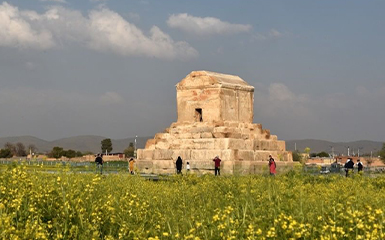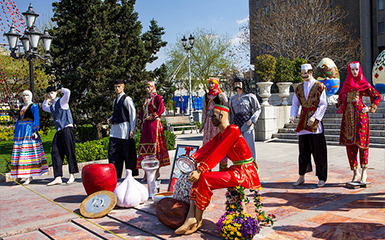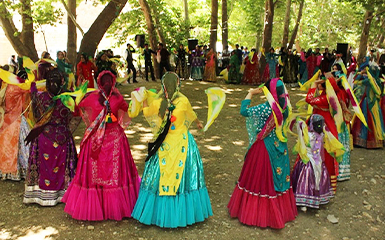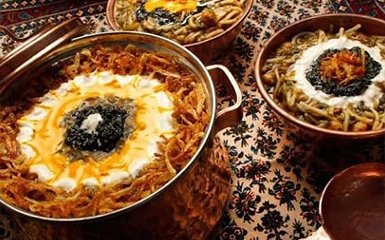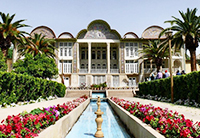
Shiraz
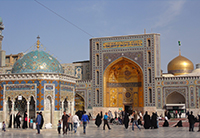
Mashhad
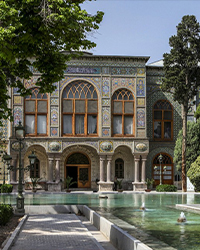
Golestan
palace
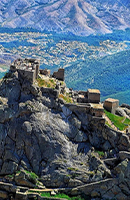
Babak
castle
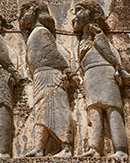
Behistun
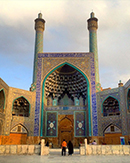
Imam
mosque
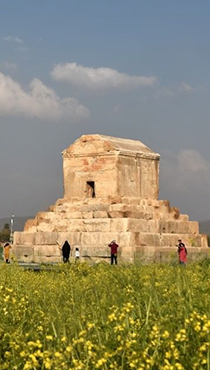
Pasargadae
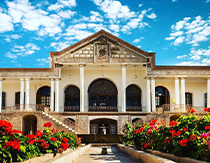
Tabriz
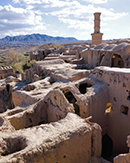
Kharanaq
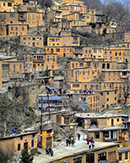
Masuleh
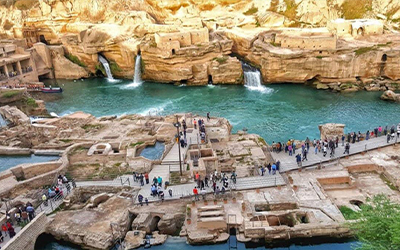
Shushtar
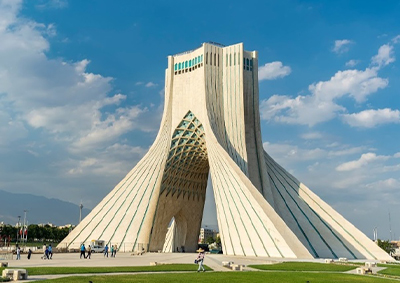
Tehran
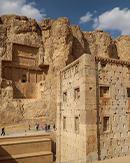
Naqsh-e
Rostam
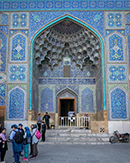
Naqsh-e
Jahan
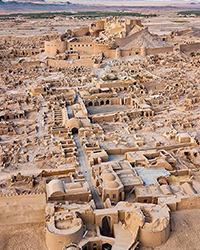
Arg-e Bam
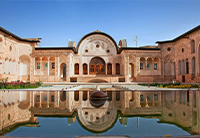
Sultan Amir
Ahmad
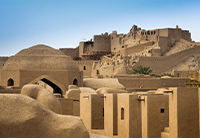
Rayen
citadel
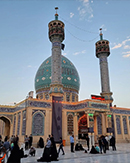
Kashan
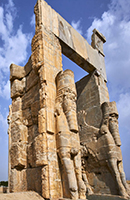
Persepolis
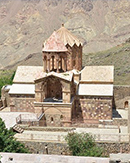
Saint
Stepanos
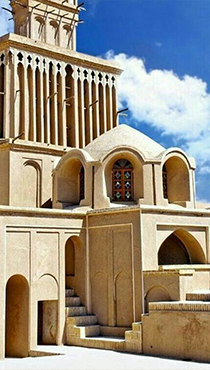
Yazd
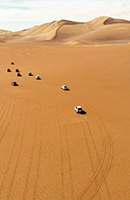
Dasht-e
lut
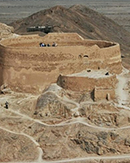
Tower of
silence
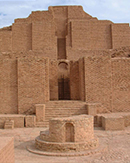
Chogha
zanbil
Like the Persian rug that shows many colours and warmly and creatively arranged shapes, Persian culture is the glue that holds the peoples of Central and Western Asia together. Famous Iranologist Richard Nelson Frye said:
It is emphasized many times that the peoples of Central Asia today, whether they speak an Iranian or Turkish language, have a culture, a religion, a set of social values and traditions that only a language separates.
The culture of Persia therefore developed over many thousands of years. However, historically, the peoples of the Islamic Republic of Iran, Tajikistan, Uzbekistan, Turkmenistan, Afghanistan, Azerbaijan and Kyrgyzstan have the same origin, and are connected to each other as only part of the vast whole called the Iranian world. Armenia, Georgia and Dagestan were also within the sphere of influence of Persian culture, and this can be seen by observing the ruins, relics and literary works of this region.
In particular, Iran, Afghanistan and Tajikistan are the countries that have managed to retain their Persian identity the most, while the others mentioned still show considerable traces of their Iranian past.
The historical region that constitutes today's Iran has been the scene of human settlements in a period that can be considered quite early. Although the information about the prehistoric times of Iran is limited, it is known that people in the Old Stone Age inhabited Southern Iran. Modern research shows that since 10,000 years ago, Iran's settled people established cities and villages, and sheep and goats were domesticated and even herds were owned.
The history of Iran (or Persia) spans thousands of years, from the ancient civilizations of the Iranian plateau, the ancient civilization of Jiroft in Kerman province and Shahr-e Sukhteh ("the burnt city") in the province of Sistan-and-Baluchistan, followed by the kingdom of Elam, between the current provinces of Khuzistan and Fars, the civilization of Lorestan and the flowering of the civilization of Marlik in the province of Gilan, and the Mannaeans who originally settled south of Lake Urmia, near the current town of Piranshahr in the West Azerbaijan Province, Medes and Persians who founded the Achaemenid Empire, from the Parthians, the Sassanids to the current Islamic Republic of Iran.
In the past, the inhabitants of tribes used the Persian carpet to protect themselves from harsh weather conditions such as cold and rain. Today, the purpose of the Persian rug has evolved into a timeless work of art that everyone should have. Over the past centuries, the level of skill and quality of each rug has been improved, new patterns and colors were added at different times in history.
Over the years, Persian rugs became increasingly attractive to Kings and Nobles who considered them a mark of wealth, importance and a family heirloom. Nowadays, in mansions and museums around the world, having a Persian rug is one of the most valuable works of art a person can own. Weavers have used the same age-old techniques of hand weaving over the centuries to ensure the rugs stand the test of time.
The art of making Persian rugs dates back to over 2,500 years ago in what is now known as Iran. The making of these rugs was a well-kept secret that was passed down from father to son, with each generation building on these skills to improve them.
The progression of Persian rug design and art is closely linked to the history of Iran. The rule of the Arab Caliphate (1038-1194 AD), Seljuk, was of great importance for the history of Persian carpets. Seljuk women introduced Turkish knots to add to the Persian rug. The Persian Hamedan rug is still hand-knotted today.
During the Safavid dynasty, Persia reached the pinnacle of its artistic history. Abbas I of Persia encouraged trade to Europe and also transformed the Persian capital of Isfahan into one of the most impressive and beautiful cities in Persian history. New carpet-making workshops were also built, allowing skilled artisans and designers to create new specimens of rare beauty. Most rugs made in this era were silk, with silver and gold threads adding even more embroidery. You can still see two carpets from this period, from the mosque of Ardabil. Many experts believe that these two rugs represent the absolute achievement in rug making. The larger of these two can be seen in the Albert and Victoria Museum in London.
The golden age of Persian rug design ended with the Afghan invasion of 1722. The great city of Isfahan was destroyed. During Afghan rule over Persia, nomads and artisans in the countryside and small villages continued their ancient and traditional activity of carpet weaving.
The practice of hand weaving Persian rugs continues today with Hamedan rugs, Baloch rugs and Suzani rugs, among the finest examples of hand woven Persian rugs. Persian rugs are still today considered a priceless work of art that should be treasured and passed down from generation to generation. The Persian rug contains the rich history and artistry of Persia in one single piece.
Minakari is a traditional Iranian painted enamel. The tradition of making metal objects covered with painted enamel developed in Iran several thousand years ago. The complex ornaments used in Minakari were formed because of the mutual influence of various, including pre-Islamic, artistic traditions of the peoples of the Iranian Highlands. Currently, the centre of the traditional production of enamel products is the city of Isfahan, and Minakari is rightfully considered one of the hallmarks of Iran, along with Khatam and Persian carpets.
Ancient enamelware with Minakari, preserved to this day in museums of different countries, testifies that Iranian master artists used this technique in their work with metal since the time of the Achaemenid dynasties (558-330 BC) and Sassanids (224-651 AD). However, most of the enamelled pottery that has survived to this day dates back to the reign of the Qajar dynasty (1785-1925). At that time, blue-green enamel was also used to decorate earrings, bracelets, caskets, vases and dishes.
Comparing Byzantine and Iranian enamels, experts concluded that this craft originated in Iran and only then spread to other countries. For example, six gold rings with enamel dating back to the 13th century BC were found in Cyprus. During excavations in the Iranian province of Hamadan, enamelled gold earrings were found, made in the 7th-8th centuries AD. An ancient gold bracelet with enamel from the Achaemenid period is kept in the British Museum.
During the reign of the Hulaguids, the art of metalworking, and then the Minakari, underwent significant changes. During the Timurid period, iron decoration acquired the most pronounced oriental features. Under the Safavid dynasty, minakari was performed on silver, and the most popular subjects were scenes of feasting, hunting and riding. They also began to depict arabesques and use red everywhere.
After the end of the Qajar era, with the beginning of social revolutions in Iran, the art of Minakari fell into decline. Gold has traditionally been used for Minakari jewelry, as it holds the enamel better and makes it even more lustrous. Silver began to be used later, mainly for such items as caskets, bowls, spoons, etc. Copper, the main metal for most folk crafts, began to be used with the widespread use of Minakari and its reduction in price.
The centre of Minakari production, like many other crafts in Iran, is Isfahan. These products are in great demand due to their artistic value and relatively low cost. At the same time, there are a small number of artisans who create unique products worth up to thousands of dollars.
The Khatam kari is a work of fine and meticulous marquetry, the oldest examples of which date back to the Safavid period: the Khatam was then so appreciated by the court that certain princes learned the technique in the same way as music, painting or calligraphy. In the 18th and 19th centuries, the Khatam experienced a decline, before being brought back into fashion during the reign of Reza Shah, during which craft schools were created in Tehran, Isfahan, and Shiraz. “Khatam” means “incrustation”. The "Khatam-kari" is therefore the "work of inlays". This technique consists of making patterns, most often star shapes, by inlaying fine wooden sticks (ebony, teak, jujube, orange tree, rose tree), brass (for the golden parts), and camel bone (white parts ). Ivory, gold and silver can also be used for collectibles.
Designing embedded articles is a very elaborate process. There are sometimes more than 400 pieces per square inch in an average quality piece of work. In each cubic centimetre of inlaid work, approximately 250 pieces of metal, bone, ivory and different types of wood can be found which are placed side by side, glued in stages, smoothed, oiled and polished. Inlaid items in the Safavid era took on a special meaning as artists created their precious works of art. Woods used include betel, walnut, cypress, and pine. These works include doors and windows, mirror frames, Quran boxes, inlaid boxes, quills and pencil holders, lanterns, and altars.
The ornamentation of the doors of the holy places consists predominantly of inlaid motifs. Samples of these can be seen in the cities of Mashhad, Qom, Shiraz and Ray. In the Safavid era, the art of marquetry flourished in the cities of southern Iran, especially in Isfahan, Shiraz and Kerman, at this time it was so appreciated in the court that some princes learned the technique, just as they did with music. , painting or calligraphy. The ornately inlaid rooms in the Saadabad Palace and Tehran's Marble Palace are among the masterpieces of this art.
Resulting from techniques imported from China and magnified by Persian expertise, this craft has existed for more than 700 years and is still particularly lively in Isfahan and Shiraz.
Iran is a vast country with 85% of its territorial area consists of arid and semi-arid regions with pastures, high and low density forests and deserts. In Iran, hundreds of living territories are founded from various ethnic groups with significant cultural, linguistic, traditional diversity and customary nature preservation systems. These peoples include the Arabs, Baluchis, Gilakis, Kurds, Lurs, Persians, Turks and Turkmens.
Three main marine environments bound Iran: the Caspian Sea to the north, the Persian Gulf and the Arabian Sea to the south. On both coasts, traditional methods of fishing have been practiced for thousands of years, with fishing governed by traditional rights and regulations.
Iran is mostly made up of deserts. For this reason, the inhabitants have learned to adapt to the lack of water throughout history. One of the indigenous techniques for collecting and managing water resources is based on the Qanat, a complex system of tunnels that extracts groundwater from mountain basins.
There are at least three types of forests in Iran: the Hyrcanian or Caspian forests (along the southern coastline of the Caspian Sea) in the north, the oak forests of the Zagros Mountains, and the mangrove forests along the southern coasts. The local communities living in the forests have always had knowledge in the management of the forest and its resources.
Wetlands have always attracted people because they provide enough water for agriculture, fishing, tourism and other services. Many of the living territories in Iran are in and around these wetlands and their resources.
The two mountain ranges of Iran, Zagros and Alborz, have a cold and dry climate that creates unique territories of extraordinary beauty, especially in western and northwestern Iran. Geographical isolation and limited natural resources, including the lack of arable land, have led to the development of intelligent management of land and water resources, based on a specific form of social organization. By using local materials, the Indigenous Peoples of the region have learned to make the best use of the scarce resources available, constructing embankments for gardens and enriching them with good soil for agriculture from other parts of the territory, such as the banks of rivers.
Located between Mesopotamia and Asia, this very vast country is located on a mountainous plateau with an average altitude of 1000m, with two areas of depression, towards the Persian Gulf and the Caspian Sea. Complex country even in its continental type climate but which presents a multitude of contrasts, according to the altitudes and the seasons. We can thus speak of the Iranian climates, rather than of a single climate, composed of extremes ranging from the hot and humid regions of the north of the country, to the cold regions of the mountains, passing through the vast dry and arid desert areas. These great climatic varieties are marked by very distinct seasons in many regions and which all offer possibilities for stays, with the exception of the heart of winter, which can be particularly very harsh throughout the country.
However, two seasons are the most recommended for trips to Iran. Spring is the season of excellence. From April to June the mild climate in all Iranian regions allows for a most pleasant discovery. Showers can be recorded in the west of the country and on the reliefs. In the region of Shiraz or Yazd the temperatures are already oscillating there as the advance towards summer towards 25-30 degrees.
The beginning of autumn, from September to November, is also a mild period and is conducive to stays in Iran. Note the marked temperature differences between day and night in all seasons. Still heat oscillating around 25 degrees on average and mildness in all regions.
Summers are extremely hot. In northern Iran, summers are hot (27 to 34°C) but often cloudy. Between March-April and September, the shores of the Persian Gulf are very wet. If you are a woman, wearing a scarf and covering clothes can be downright painful in hot weather.
As for the winters, they are harsh and rainy in the North of Iran, but milder in the South, on the shores of the Persian Gulf and the Gulf of Oman. Temperatures vary greatly according to seasons and regions, due to the geographical location and the variety of reliefs.

Airlines
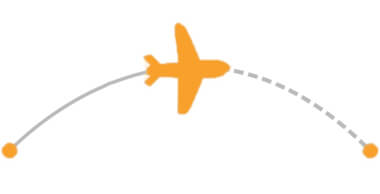






You have dreamed for years of strolling through the gardens of Shiraz, of discovering the main square of Isfahan, of visiting the remains of Persepolis. Iran is opening up to travellers. However, you still have some reservations about traveling to the land of the towers of silence to fire temples, from palaces to mosques, from caravanserais to teahouses, from gardens to orchards, traveling in Iran is discovering one of the richest civilizations in the world.
On the dress side, first, women cannot derogate from the code imposed by law: scarf covering the hair and coat hiding the legs up to mid-thigh are compulsory. However, the police are less ferocious than they used to be and the dress code for traveling to Iran is less strict than it was a few years ago. Except in mosques and administrations, ladies, you can wear your headscarf like the women of the northern districts of Tehran.
As in many other countries in the world, it is forbidden to photograph military buildings, airports, stations, embassies. Also, avoid photographing religious people, especially if they are wearing a black turban. However, don't worry – the bas-reliefs of Persepolis, the main square of Isfahan, the water reservoirs of Yazd, the great bazaar of Tabriz, all listed, along with many others, as World Heritage Sites: there is still enough to photograph!
Credit cards and travellers checks cannot be used or accepted in Iran. During a trip to Iran, it is therefore advisable to bring cash in foreign currency for the duration of the stay, in dollars or euros.
There is officially no alcohol. It will be an opportunity for a detox. Try rose water – it’s a refined, thirst-quenching… and healthy drink. The picnic is a national activity, which is practiced everywhere - in the countryside and the cities, by the river, in squares and public gardens, in the shade of mosques, on the graves of poets.
If you have read everything about Persian civilization and religious architecture, you will not be disappointed. Iran has an exceptionally rich architectural and cultural heritage. Meeting the Iranian people can be unanticipated. However, they are eager to meet people, and will do everything to welcome you as well as possible, and to share their culture with you.
Parties and festivals in Iran form a beautiful part of Iranian culture and attract many tourists to this mysterious country every year. These holidays and festivals are generally classified into two main groups: Persian festivals and religious festivals.
Persian festivals are those that have their roots in ancient Persia and have survived into our era, for example: Nowruz (the Iranian New Year), Yalda (the longest night of the year), the Sadeh festival ( Mid-Winter Festival), Charshanbeh-Suri (Fire Festival), Sepandarmazgan (Iranian Valentine's Day), Sizdah Be Dar (Nature Festival) and monthly festivals are some examples of this type.
Among the religious holidays, the most important are Nimeh Sha'bân (the birthday of the twelfth Imam of the Shiites), Ghadir, Ghorbân or Aid al-Adha (the festival of the sacrifice), Aid el-Fitr (Ramadan), Ashura (the anniversary of the martyrdom of the third Shiite Imam), etc.
In the Northern Hemisphere, March 20 marks the beginning of spring. For three hundred million people around the world, it is also the start of a new year. Nowruz – which means “new day” – is a traditional festival that celebrates the New Year in Iran, when the solar calendar coincides with the vernal equinox.
Preparations for the holiday of Nowruz, traditionally celebrated on the day of the vernal equinox, begin weeks before. We start dancing and, to ward off the evil eye, we fill the buckets with water, synonymous with good health. Through the ages, the Persian diaspora has succeeded in perpetuating the tradition in all four corners of the planet.
Many also celebrate Charshanbeh-Suri, the last Wednesday before Nowruz. During this fire festival, we jump over the flames or we practice the rite of “beat the ladle” on the doors so as not to attract bad luck. Cemeteries are also visited to bring offerings to the dead. Some believe that the spirits of the ancestors visit the living during the last days of the year.
Written sources give the right to believe that the history of Iran is at least five millennia old. It was on this land that the once famous Persia was located, familiar to all oriental fairy tales. The state has played a key role in the region since the days of the Median Kingdom, and the culture of Iran has become one of the unique and important in the Middle East. An Islamic state, Iran obeys the requirements of the Muslim religion in everything. Islam dictates the rules of behavior and the standards of architecture, subjects of painting and musical tendencies.
Considering that, Iran belongs to the group of ancient civilizations, most of the traditions and customs of its people are known. The coexistence in this country of many ethnic groups undoubtedly results in a wide variety of rites and traditions whose origins extend to popular beliefs, climatic conditions and even religious and even family beliefs of people from all regions. Ethnic groups such as Kurds, Baluchis, Farsi-speakers, Arabs, Turks, Turkmens, Lor, Gilaki, Qashghai etc... each with appreciated and noteworthy habits and customs, all have contributed to the richness of the national culture.
In Iranian culture, architecture has always played a particularly important role. Luxurious Persian palaces and entire fabulous cities have been preserved on the territory of the Islamic Republic of Iran. Many of them have become World Heritage Sites. Persian rugs, fabrics, musical instruments and marquetry pieces, dishes and copper candlesticks are among the great artisanship of the country. It is forbidden to export antiques or old carpets without authorization.
Iranian cuisine is also part of the local culture, which you can experience in any cafe or restaurant. Independent travel connoisseurs recommend visiting an Iranian home to taste real cuisine, the main menu of which consists of aromatic dishes of vegetables, lamb, fruits and fresh bread. The main drink of Iranians is tea. The process of its preparation and the tasting itself become a real ritual, the subtleties of which are transmitted from generation to generation. During the period of Ramadan, avoid eating, and even chewing gum or smoking, between sunrise and sunset. At least, do not do it in plain sight.
Iranian cuisine is rich in vegetables, rice, dried fruits, yogurts, meat stew and some spices. Although it is very similar to Mediterranean cuisine, it is very varied and it is difficult to identify what you eat in Iran. Below we are going to introduce some of the Iranian dishes that you must try.
In Iran, nun (bread) or berenj (rice) accompany almost every meal. The most implicit dish remains the kebab: skewers of lamb and chicken accompanied by rice and grilled over charcoal. Iranians are also used to eating vine leaves and stuffed eggplant. For dessert, you can taste Iranian fruits depending on the season: pomegranates, peaches, watermelons, pink grapefruits... or taste pastries such as macaroons, paludeh (sorbets made from rice flour, grated fresh fruit and fresh water from Shiraz) or gaz from Isfahan (a kind of very sweet nougat).
Almonds, pistachios, raisins and nougats accompany the tea that is drunk as an aperitif; while on the brazier simmer khoresh fesenjaan, chicken stew, pomegranate juice and crushed walnuts, and saffron rice. A shared picnic is an opportunity to discover all the subtlety and refinement of Iranian gastronomy; it is also and above all the opportunity to share a moment with Iranians. Because in Iran, what marks is the reception of the Iranians. Their kindness, their generosity. Iranians want to give, more than to receive. All those who have traveled there in Iran say it: in no other country in the world, one receives such a welcome.
The most common drink is Chay (tea). You will be offered it in chaykhuneh (tea houses) as well as at a carpet seller, an individual... It is sometimes difficult to find good coffee. Tap water is not only drinkable but also very healthy, except in Tehran, which is the only city where bottled water can be recommended (canal pollution). The water network is exceptional and unique throughout the Middle East and Central Asia. There is officially no alcohol. It will be an opportunity for a detox. Try rose water – it’s a refined, thirst-quenchin and healthy drink.
In terms of desserts, the most typical is gosh-e fil, an ear-shaped pastry with dried fruits or baklava of Turkish origin, which is a filo pastry of dried fruits and honey. Sohan is also traditional and is a cake made from flour, butter, rose water, saffron, sugar and dried fruits with glossy caramel on top. Finally, we must mention the halva, a kind of Persian turon made with butter, flour and sugar.
At the crossroads between the Middle East and Central Asia, Iran is a mountainous country of more than 1.6 million square kilometres, offering diverse landscapes, from sandy desert to lush forests. Its fauna and flora are varied due to the vastness of the territory. If you are lucky, you will be able to see during your trip to Iran one of the last specimens of the Iranian cheetah in the Dasht-e Kavir desert or deer in the forests of the Zagros mountains.
Iran is located between the anticyclonic air masses of Central Asia and Siberia in the north, the Mediterranean wind regime in the centre (westerly winds and depression bringing rain and snow) and influences, tropical and sub-tropical in the south and southeast of the country. There are therefore different types of climate in Iran, from the humid subtropical lowlands on the southern coast of the Caspian Sea to the hot and dry deserts (Dasht-e Kavir and Dasht-e Lut).
In the northwest, winters are cold with heavy snowfall and freezing temperatures in December and January. Spring and fall are relatively mild, while summers are hot and dry. In the south, the winters are mild and the summers very hot, with average temperatures in July exceeding 38°C. On the plain of Khuzestan, the heat of summer is accompanied by high humidity.
Given the large size of the country and the climatic varieties due to various factors, the differences in altitude, the level of precipitation and evaporation, the types of soil, etc. the territory of Iran has a large quantity of biomes and biotopes, which amounts to saying an important variety in the native fauna and flora. More than 8,000 species (including 450 endemic) are listed there; tracheobiontas are more numerous there than in central Europe. The Iranian deserts are the habitat of animals such as the Iranian cheetah, the Indian gazelle, the Asian houbara bustard or many species of geckos, while the mountainous forests are home to endemic squirrels, rare fallow deer or raptors of great size like the bearded vulture.
